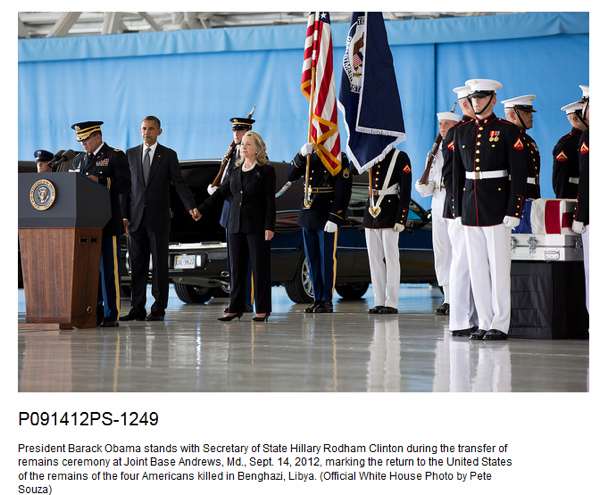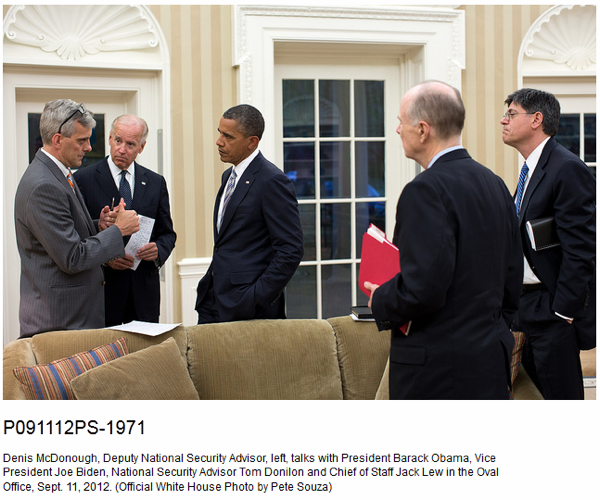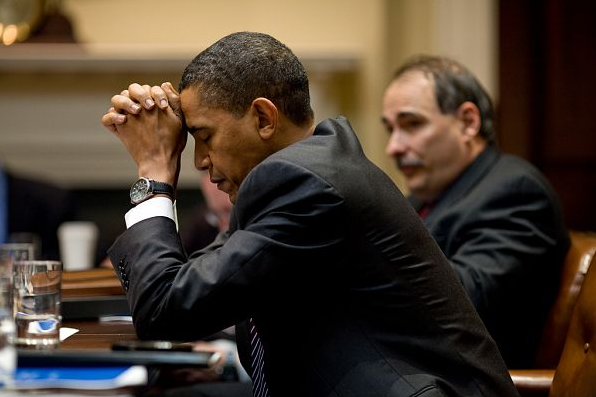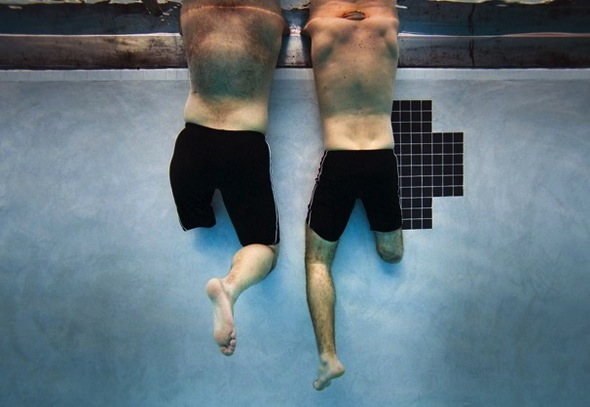Notes
White House Flickr and Keeping the Benghazi Story Straight

Here’s the problem with policy controversies, damage control, and explanations after-the-fact in this age of visual PR, especially as deftly as the White House usually practices it.
With Romney and the GOP attacking the Administration’s preparation and explanation(s) for the attack in Benghazi, the images on the White House Flickr stream are as much a part of the political narrative as any words. Take a look at two photos, for example, uploaded as part of a group on October 11th, the day of the Veep debate. Photos of Obama and Clinton greeting the bodies of those Americans slain in Libya have been published before, but in this Pete Souza rendition, we see Obama and Clinton actually holding hands. This moment was noted in printed news accounts of the event, captured from somewhat obscured angles by wire and outlet photographers, but never as clearly as above.
To the extent that the White House has been working and reworking the narrative, laying responsibility for the lack of security in Benghazi on the State Department but also defending State’s performance overall (primarily through statements by Clinton reinforcing the professionalism of the agency, the complexity of the security situation and how easy it is to “Monday morning quarterback”), this powerful photo could be seen as tying Obama and Clinton strongly together on policy as well as responsibility.
Certainly, you can rebut that reading with the very real explanation of solidarity in a deeply emotional moment, but that’s not how photos are read or utilized in political hardball. (If the photo, perhaps, has high content value internally given the importance of Hillary and Bill Clinton’s loyalty and support in the campaign’s closing days, it’s easy to also read “close communication,” and in the face of controversy, a united front.)

As for this photo of Biden participating in a high level discussion with the President and National Security Adviser Denis McDonough taken on 9/11, the date of the Benghazi attack, it’s one thing to press the case that the White House and the State Department were not in sync, but it’s hard for any member of the administration to argue that the buck doesn’t stop with the Oval Office. The accounts, whether given in testimony or to the press, are set; the photos enhance the White House position or contradict it. It’s difficult to visually trumpet Biden’s valued role as “in the know” in what looks like an active and engaged White House dealing with an international incident while, at nearly the same time, pressing the public claim that they lacked information.
It doesn’t look very good either way.
One thing the Administration might want to review, by the way, is when they push a photo out as much as what that photo has to say — especially as they now seem to mostly rely on the White House Photo of the Day to send visual messages. The touching photo of Obama and Clinton has existed for a month, as has the photo illustrating Biden’s role in top flight foreign policy discussions. Yet we are only seeing them now instead of then. We are back to the problem of damage control and explanations after the fact: when a photograph is used to illustrate a point rather than to record an event or person, that visual explanation encompasses every element of the photo. Even elements the White House may not want to emphasize.


Reactions
Comments Powered by Disqus